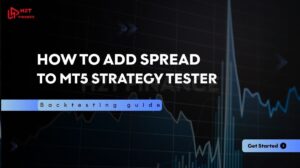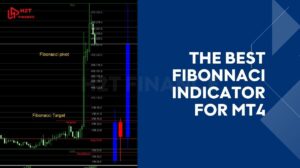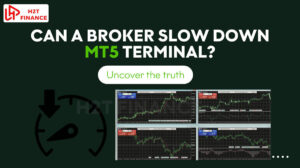If you’re curious about how individuals earn profits by trading currencies using just their laptops or smartphones, you’ve come to the right spot. That's forex trading, and it's one of the biggest financial markets in the world with over $7.5 trillion traded globally every day! While it can seem thrilling, diving in without a clear strategy can lead to significant risks.
In this guide, we’ll show you the best way to trade forex successfully like a professional in 2025. From understanding the market to choosing the right tools and developing smart strategies, we’ll walk you through simple yet effective steps. Let’s begin your journey toward confident and profitable forex trading!
Key takeaways:
- Forex trading is the largest financial market in the world, with over USD 7.5 trillion traded daily.
- Understanding the concepts, mechanics, and different types of forex markets (spot, forward, futures, options) is the foundation for effective trading.
- Combine technical analysis and fundamental analysis to make more accurate trading decisions.
- Choose a reputable broker licensed by a financial regulatory authority to protect your capital and access quality trading tools.
- Always create a trading plan and test your strategy on a demo account before using real money.
- Manage risk strictly: risk only 1–2% of your capital per trade, set stop-loss/take-profit levels, and avoid emotional trading.
- Record and analyze your trading history to learn from experience and improve performance.
- Experiment with different trading styles (scalping, day trading, swing trading, position trading) to find the method that suits you best.
- Start with a small amount of capital (USD 50–100) and gradually increase it as you gain experience.
- Success in forex is a process of continuous practice, discipline, and learning.
1. What is forex trading?
Forex trading, also known as currency trading or foreign exchange trading, involves exchanging one currency for another with the goal of making a profit. For instance, if you convert U.S. dollars into euros or vice versa, you're participating in the forex market. The value of one currency relative to another is known as the exchange rate, and it constantly fluctuates based on global economic and political factors.
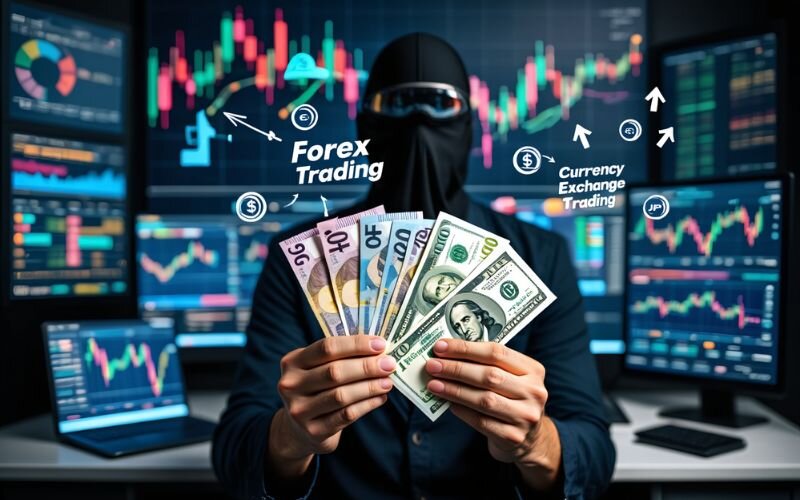
The forex market runs 24 hours a day, five days a week, enabling participants worldwide such as banks, companies, and individual traders to engage in trading whenever they choose. It’s one of the most accessible financial markets, as you only need a small initial investment and a stable internet connection to begin trading.
Quick summary:
- Forex trading = buying and selling currencies to make a profit.
- Exchange rates constantly change due to global economic and political factors.
- Operates 24/7 (Monday to Friday), allowing trading at any time.
- Minimum requirements: small capital + stable internet connection.
- Easily accessible market, suitable for both individuals and organizations.
2. Types of forex markets
To start trading forex effectively, you need to understand the common market types you can participate in. Each has its own mechanism, purpose, and risk level. Here’s an overview:
- Spot market: This is the simplest and most common form of trading. Currencies are bought and sold immediately based on the current exchange rate, usually settled within two business days. The fast execution makes this market a favorite for those who want instant results.
- Forward market: In this market, two parties agree to buy or sell a currency at a specific date in the future, at a price determined today. Forward markets are often used to hedge against exchange rate fluctuations, particularly useful for businesses engaged in international trade.
- Futures market: Works similarly to the forward market but involves standardized contracts traded on officially regulated exchanges. Futures contracts lock in an exchange rate for a specific future date, offering greater transparency and discipline compared to privately negotiated forwards.
- Options market: The options market gives you the right, but not the obligation, to buy or sell a currency at a predetermined price within a certain time frame. This is a flexible tool often used by experienced traders to manage risk while keeping profit opportunities open.
Tip for beginners: Start with the spot market before moving into more complex markets. This will help you get familiar with trading mechanisms and manage risks more effectively.
3. Best way to trade forex: What you need to know to start effectively
Getting started with forex trading might feel overwhelming, but with the right guidance, anyone can learn and improve over time. If you are searching for how to trade forex trading for beginners, you're in the right place. In this guide, we'll walk you through proven strategies used by experienced traders and show you how to apply them even as a newcomer.
3.1. Master both technical and fundamental analysis
Wondering how to start trading forex successfully? It all begins with mastering two key types of analysis: technical and fundamental. Technical analysis involves understanding price charts and identifying patterns such as candlestick formations or trend shapes that help predict potential price movements.
On the other hand, fundamental analysis looks at economic data and major news events, such as inflation figures or job reports, which can influence the value of currencies in the market.
Skilled traders know how to combine both types of analysis for better results. For instance, before entering trades with popular currency pairs like EUR/USD or GBP/USD, a seasoned trader will review recent market trends alongside current economic news. This combined approach helps refine their timing and supports more informed trading decisions.
Key subjects to grasp:
- Candlestick formations such as the Doji, Hammer, and Engulfing patterns - these can offer clues about potential market reversals or continuations.
- Main currency pairs you’ll likely encounter include EUR/USD, GBP/USD, USD/JPY, AUD/USD, USD/CHF, USD/CAD, and NZD/USD.
- Economic factors that influence currency values, including inflation reports, central bank interest rate decisions, and employment statistics.
3.2. Know the forex markets
It’s important to understand how the forex market functions before placing any trades. A lack of knowledge can lead to poor decisions or missed chances. Since various market sessions behave differently, experienced traders use this to their advantage choosing the most favorable times and strategies to enter or exit trades.

Here are three primary types of forex markets that traders often focus on:
- Spot market: This is where currencies are traded immediately at the current exchange rate. It’s the most common and straightforward type of forex market.
- Forward market: In this market, two parties make a private agreement to exchange currencies at a set rate on a specific future date.
- Futures market: Like forward contracts, futures involve agreeing to a currency trade at a later date but these are standardized contracts traded on official exchanges with predetermined terms.
Each forex market type comes with its own trading characteristics, timing, and risk levels. The spot market is known for its speed and simplicity, making it ideal for beginners. Meanwhile, the futures market involves more structured contracts, appealing to experienced traders who prefer defined terms and regulated exchanges.
Understanding how these markets differ helps you choose the one that fits your trading style and objectives and reduces the chances of unexpected outcomes.
3.3. Pick a reliable forex broker
Choosing a broker isn’t just about flashy platforms or attractive promotions. What really matters is finding one that prioritizes the safety of your funds and provides reliable tools to support your trading journey.
A trustworthy broker is typically licensed by reputable regulatory bodies such as the CFTC or NFA in the United States. These regulatory memberships ensure the broker follows strict standards, offering fair pricing, client protection, and responsible business practices.
Reputable trading platforms help reduce the chances of problems like withdrawal delays, unfair pricing, or fraudulent activity. They operate with clear, transparent terms and provide dependable customer service to support your needs.
Another key benefit of using a trustworthy broker is access to high-quality trading tools. Top-tier platforms typically include advanced charting options, support for automated strategies (like expert advisors), backtesting functionalities, and mobile apps that keep your trading seamless across different devices.
In addition, regulated brokers often provide helpful educational and analytical tools, such as economic calendars, market signals, and beginner-friendly forex guides. These resources can be incredibly valuable especially for those who are just starting to explore how forex trading works and want a solid foundation to build on.
See more related articles:
- Real life forex trade scenario step by step
- Top 20 forex acronyms traders must know
- What Is Leverage In Forex? How To Use Leverage In Forex Safely
3.4. Create & test your trading plans
Diving into the forex market without a clear strategy is like setting sail without a compass - you might get lucky now and then, but you're more likely to lose your way. That’s why creating a personal trading plan is essential.
A well-structured plan outlines exactly when to enter or exit trades, how much risk to take on, and how to manage open positions. Just as importantly, it helps you stay emotionally disciplined during market volatility, preventing rash decisions driven by fear or greed.
Before trading with real money, it's crucial to test your strategy thoroughly. You can do this by using demo accounts or built-in backtesting tools available on platforms like MetaTrader 4. This allows you to evaluate how your plan would perform in actual market scenarios without risking capital. Taking the time to backtest not only helps you avoid expensive errors but also builds trust in your trading system.
3.5. Understand Your Boundaries and Control Your Risks
Risk management isn’t just for seasoned traders - it’s a must for beginners too. To safeguard your capital in the forex market, here are a few key principles to follow:
- Limit your risk per trade to 1–2% of your total account balance: This helps keep potential losses manageable, making it easier to bounce back from setbacks.
- Always set stop-loss and take-profit levels: These tools automatically close trades at predetermined prices, helping you cap losses and secure gains even if you’re not actively monitoring the market.
- Understand how leverage works: Leverage can amplify both profits and losses. Start cautiously, use lower leverage at first, and avoid putting too much of your account at risk.
- Avoid emotional trading: Resist the urge to chase losses or make impulsive trades. Stick to your trading strategy and accept that losses are a natural part of the process.
3.6. Monitor your trading
One of the most effective ways to improve as a forex trader is by reviewing your own trading history. Keeping track of your trades helps you identify recurring patterns both successful tactics and costly mistakes so you can refine your strategy over time.
An easy way to do this is by maintaining a trading journal. In it, record every trade's details: your reasoning, entry and exit points, emotions during the trade, and the outcome. Over time, this practice can reveal valuable insights, helping you break bad habits and reinforce smart decisions.
Many experienced traders also use analytics tools like MyFxBook or built-in broker dashboards to gain deeper insights. These tools provide data on win/loss ratios, average returns, and risk metrics. The more you analyze your performance, the more confident and strategic your trading decisions will become.
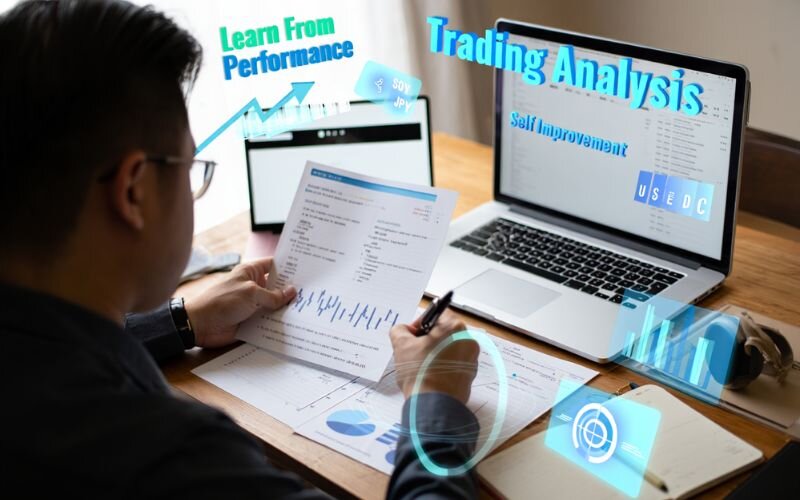
3.7. Learn from your trading
Successful forex traders never stop learning and adapting. By consistently reviewing your trade history and analyzing results, you'll start to recognize what trading approach aligns best with your strengths and preferences.
Exploring various trading styles can help you gain experience and build your own strategy:
- Scalping: Perfect for those who enjoy making quick decisions and locking in small gains within minutes.
- Day Trading: Involves opening and closing trades within the same day, avoiding the risks of holding positions overnight.
- Swing Trading: Ideal for traders who prefer holding positions for several days to capture medium-term price movements.
- Position Trading: Suits patient traders who are comfortable keeping trades open for weeks or months, focusing on long-term market trends.
By experimenting with these methods and learning from both wins and losses, you’ll eventually find the style that fits your goals, personality, and lifestyle. Even seasoned professionals fine-tune their strategies over time and so should you.
4. Basic forex trading strategies for beginners
To trade forex effectively, having a clear strategy is essential especially if you’re new to the market. Below are popular, easy-to-apply strategies that are suitable for beginners:
- Trend trading: This is a simple strategy and a common choice for new traders. You analyze to identify the market’s main trend - upward (bullish) or downward (bearish) and trade in the same direction. For example, if the EUR/USD pair is steadily rising, you might open a buy position expecting the trend to continue.
- Range trading: This strategy relies on identifying support and resistance levels the lowest and highest price points a currency pair typically fluctuates within over a certain period. You buy at the support zone and sell at the resistance zone. This method works best when the market is moving sideways without strong volatility.
- Breakout trading: With this strategy, you look for opportunities when the price breaks out of a specific price zone or pattern, such as a triangle or horizontal channel. The goal is to capitalize on the early stage of a new trend. However, you need to be aware of the risk of false breakouts.
- Scalping: Scalping aims to profit from very small price movements, often within just a few minutes or even seconds. Due to the high trading frequency, this method requires intense focus and quick decision-making. Beginners should start small before using this approach regularly.
- Swing trading: A medium-term strategy where trades are held for several days to weeks to capture moderate price swings. Swing trading often combines both technical and fundamental analysis to determine optimal entry and exit points.
- Position trading: A long-term strategy in which trades are held for weeks, months, or even years, based on the market’s long-term trends. Position trading is less affected by short-term fluctuations and requires patience, making it suitable for traders with a long-term vision and strong market analysis skills.
There is no single strategy that works for everyone, and success in forex trading comes from choosing a method that aligns with your goals, personality, and available time.
Start with simple strategies, practice on a demo account, and gradually adjust based on real-world experience. Once you understand the strengths and weaknesses of each approach, you’ll be able to build a more effective and sustainable trading system.
5. How much money do you need to start trading forex?
One of the great advantages of forex trading is that you don’t need a large sum to begin. Many brokers let you start with a very low minimum deposit even as little as zero dollars. This makes it easy to try out trading without committing a lot of money upfront. Naturally, the size of your trades should reflect your financial situation, risk appetite, and personal objectives.
For those new to forex trading, starting with a small amount is the smartest approach. Depositing between $50 and $100 is usually sufficient to open a mini account with most brokers. This allows you to practice your strategies, gain hands-on experience, and become comfortable with the trading platform.
Avoid investing large sums right away. Focus first on testing your trading plan and risk controls, building confidence along the way. As you develop consistency and skill, you can gradually increase your trading capital.
6. Final thoughts: Start trading forex the right way
Learning the best way to trade forex is not just about placing orders - it’s about building skills, staying disciplined, and continuously improving your strategy. Whether you're drawn to short-term scalping or prefer long-term swing trading, the key to success lies in proper education, smart risk management, and consistent practice.
At H2T Finance, our mission is to help you navigate the world of currency trading with clarity and confidence. Through our Forex Basics category, we provide beginner-friendly guides, real-life trading tips, and unbiased insights everything you need to start strong in 2025 and beyond.
Forex trading offers great opportunities, but only for those who are well-prepared. Stick to your trading plan, manage your risks wisely, and never stop learning. The journey to becoming a profitable trader starts with taking the first informed step and you're already on the right path.
